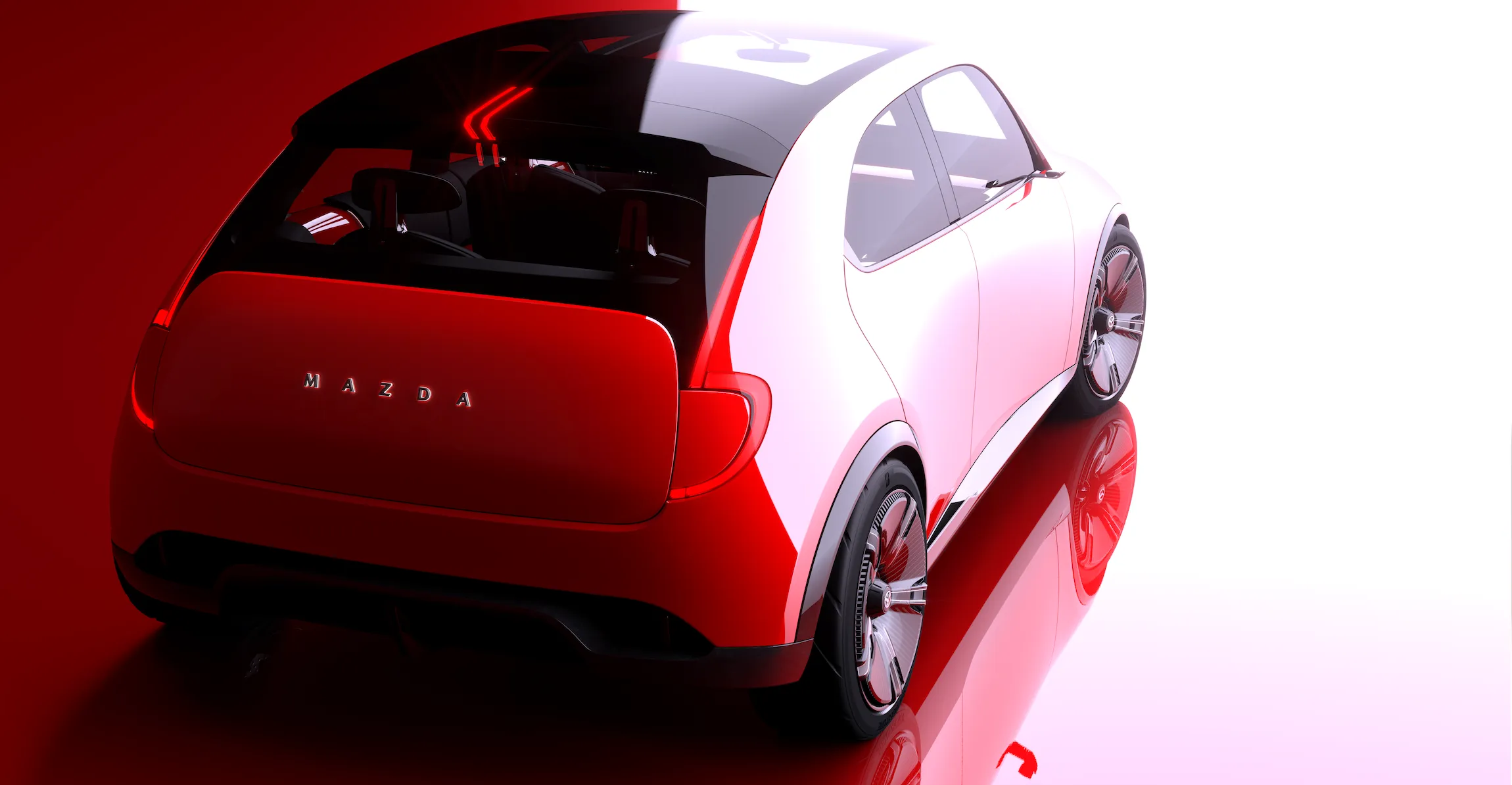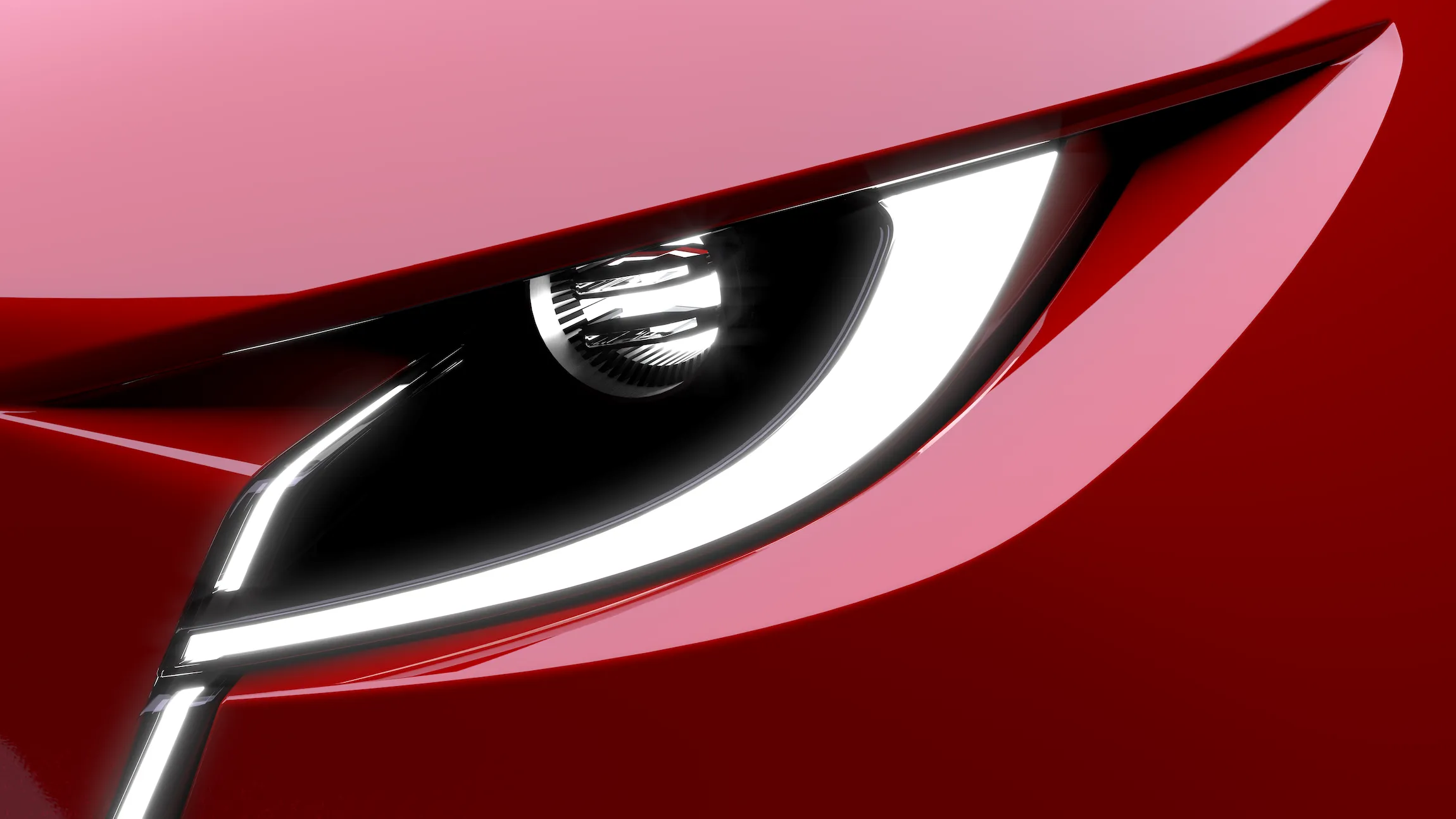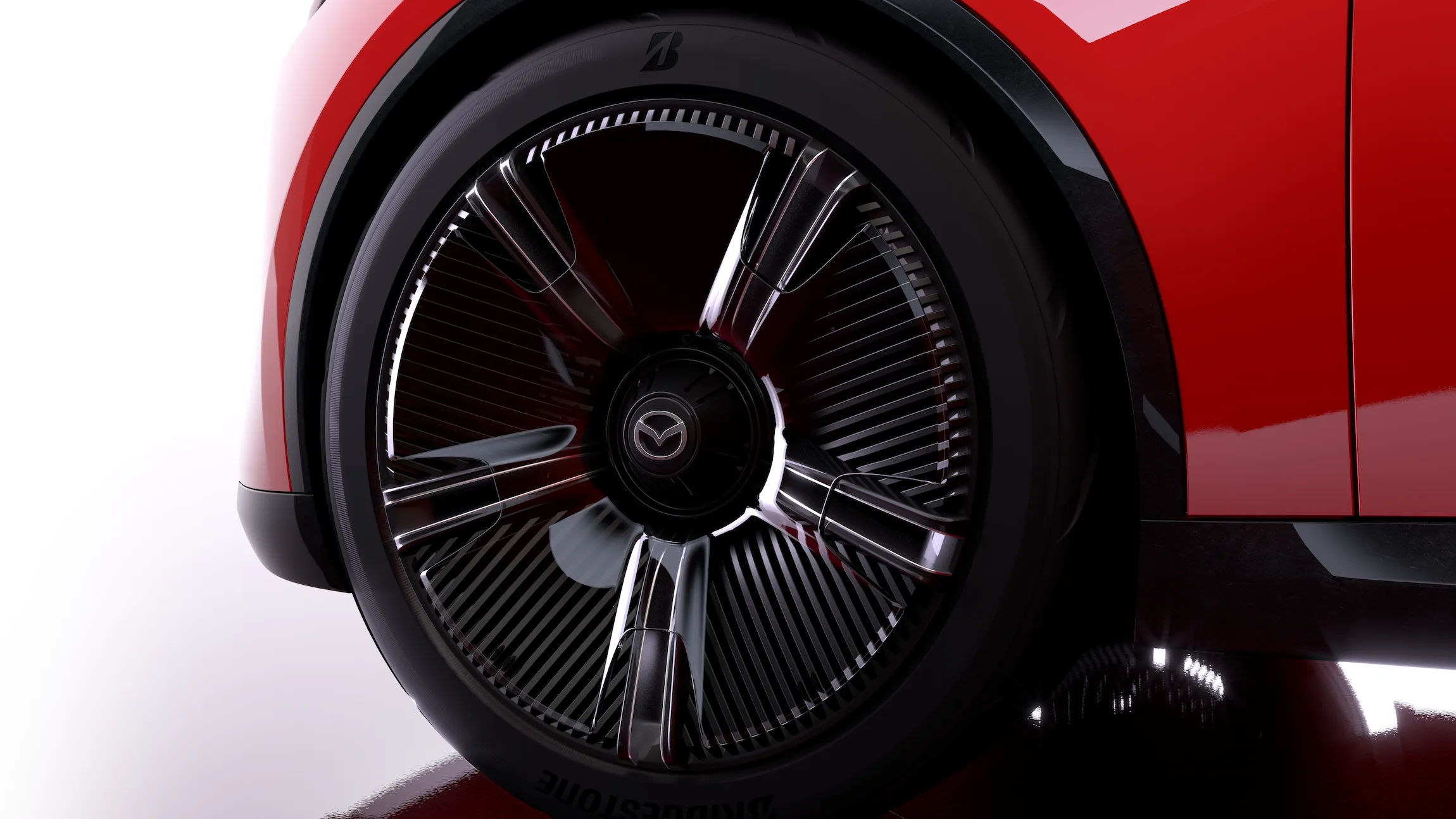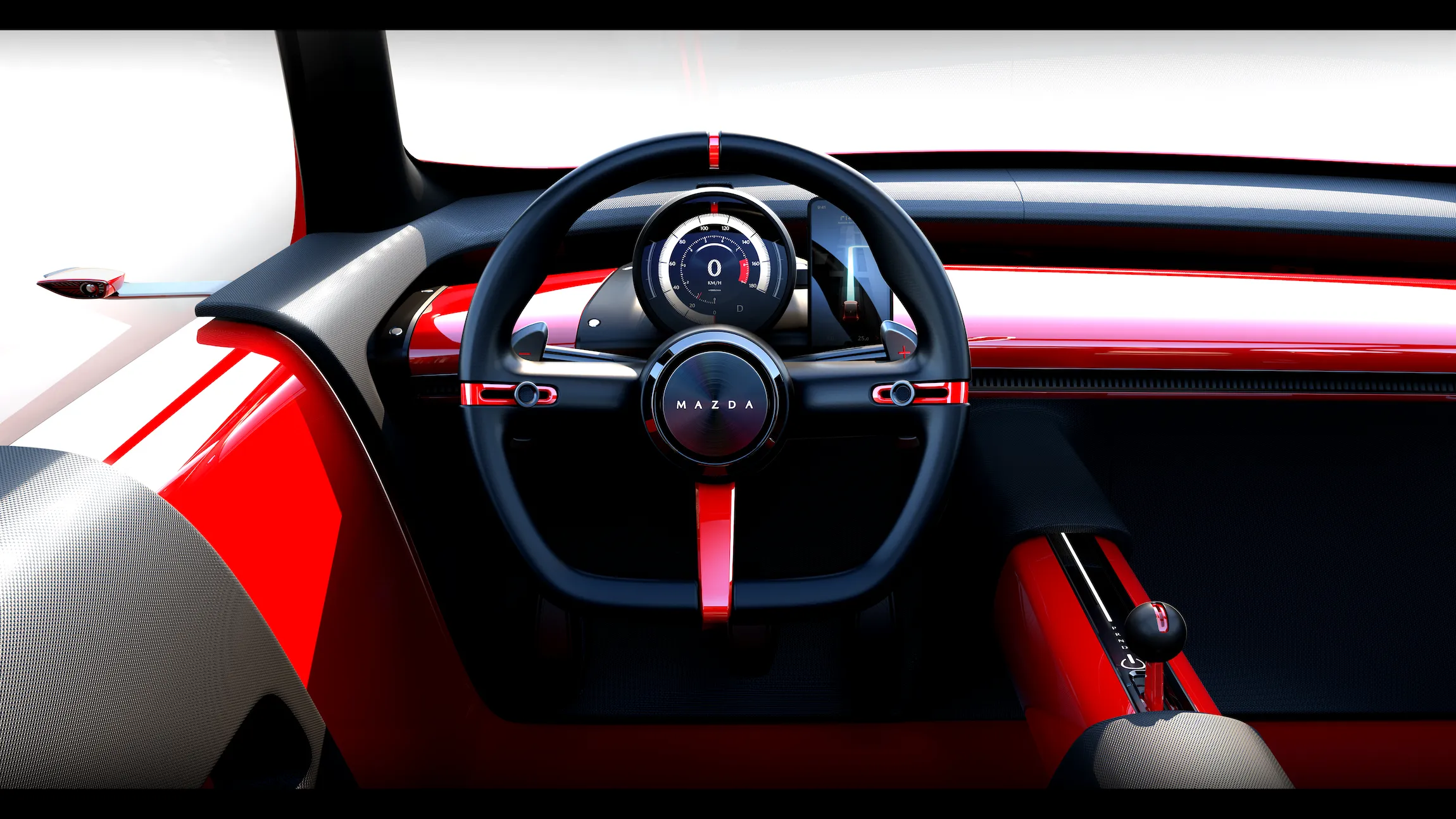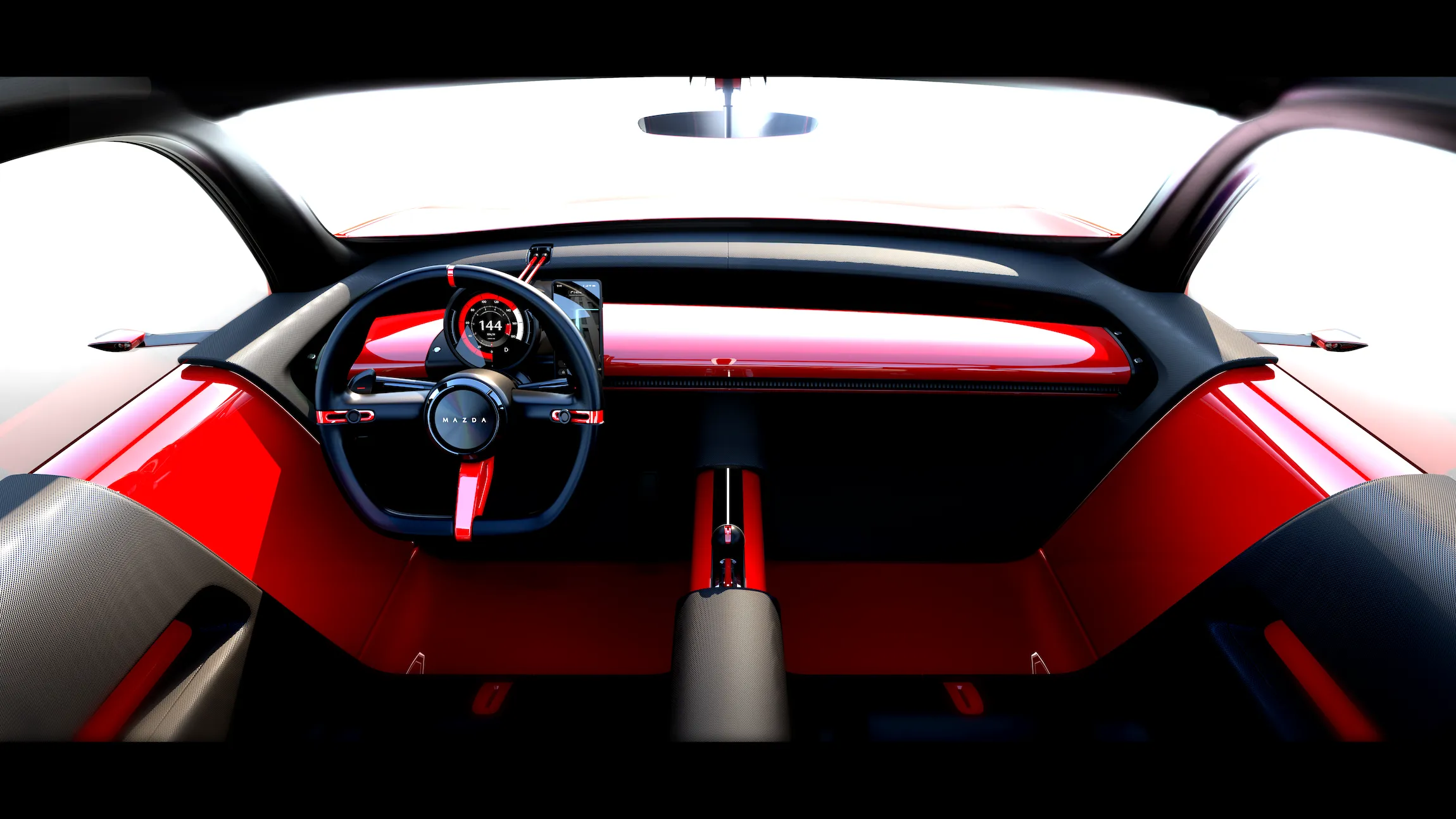Would you feel “cuteness aggression” toward a car? Meet the Mazda Vision X-Compact and its AI that promises to be your best friend.
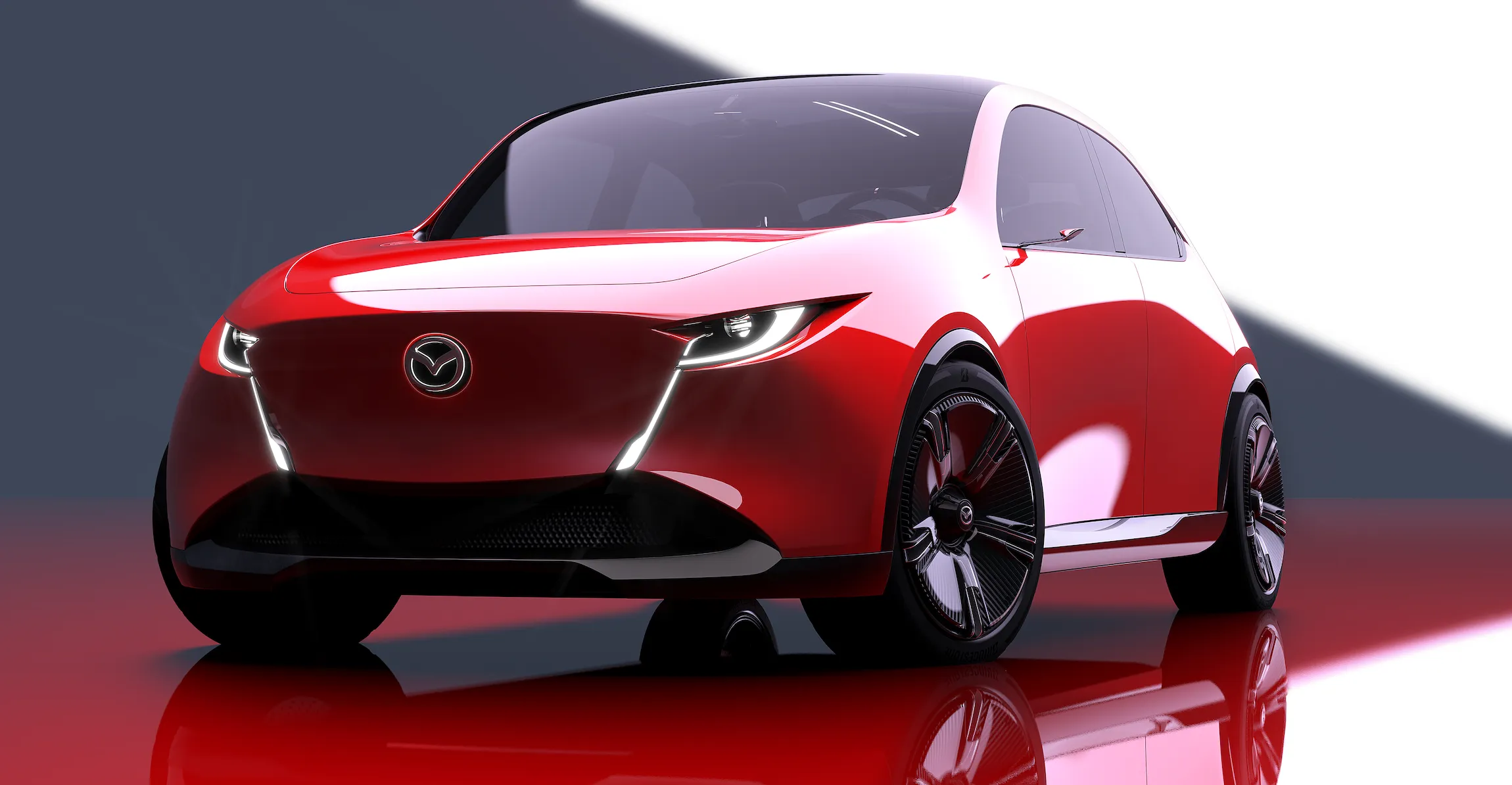
Do you know that uncontrollable urge to squeeze something extremely cute? Psychologists call this “cuteness aggression,” an overwhelming reaction to something so adorable that our brain doesn’t know how to process it. And that is exactly the feeling that the new Mazda Vision X-Compact provokes. Presented at the Japan Mobility Show, this concept is not just a sculpture on wheels; it’s a window to a future where your car will be your best friend, featuring a technological secret that promises to change everything.
The Design That Causes ‘Aggressive Cuteness’: Unveiling the Mazda Vision X-Compact
At first glance, the Vision X-Compact is a work of minimalist art. Bathed in Mazda’s iconic red Soul Red, its body is smooth and sleek, with flowing lines that extend seamlessly. Measuring just 3.8 meters long, it is significantly smaller than the current Mazda 3, positioning itself as a smart and agile solution for congested metropolises. While the market is flooded with larger SUVs like the SEAT Arona 2026, Mazda dares to go against the trend, betting on compact efficiency for the US market.
The exterior follows the brand’s “Kodo – Soul of Motion” design philosophy, but in an evolved form. The traditional front grille has been replaced by a solid illuminated panel, reminiscent of modern electric vehicles, but with a unique signature: LED daytime running lights form sharp “prey” crossing where the grille would end. The enormous wheels, with aerodynamic design, fill the wheel arches completely, giving the small hatchback a surprisingly assertive and muscular posture. Other standout details include digital mirrors and the lack of visible handles, contributing to a flawlessly clean surface.
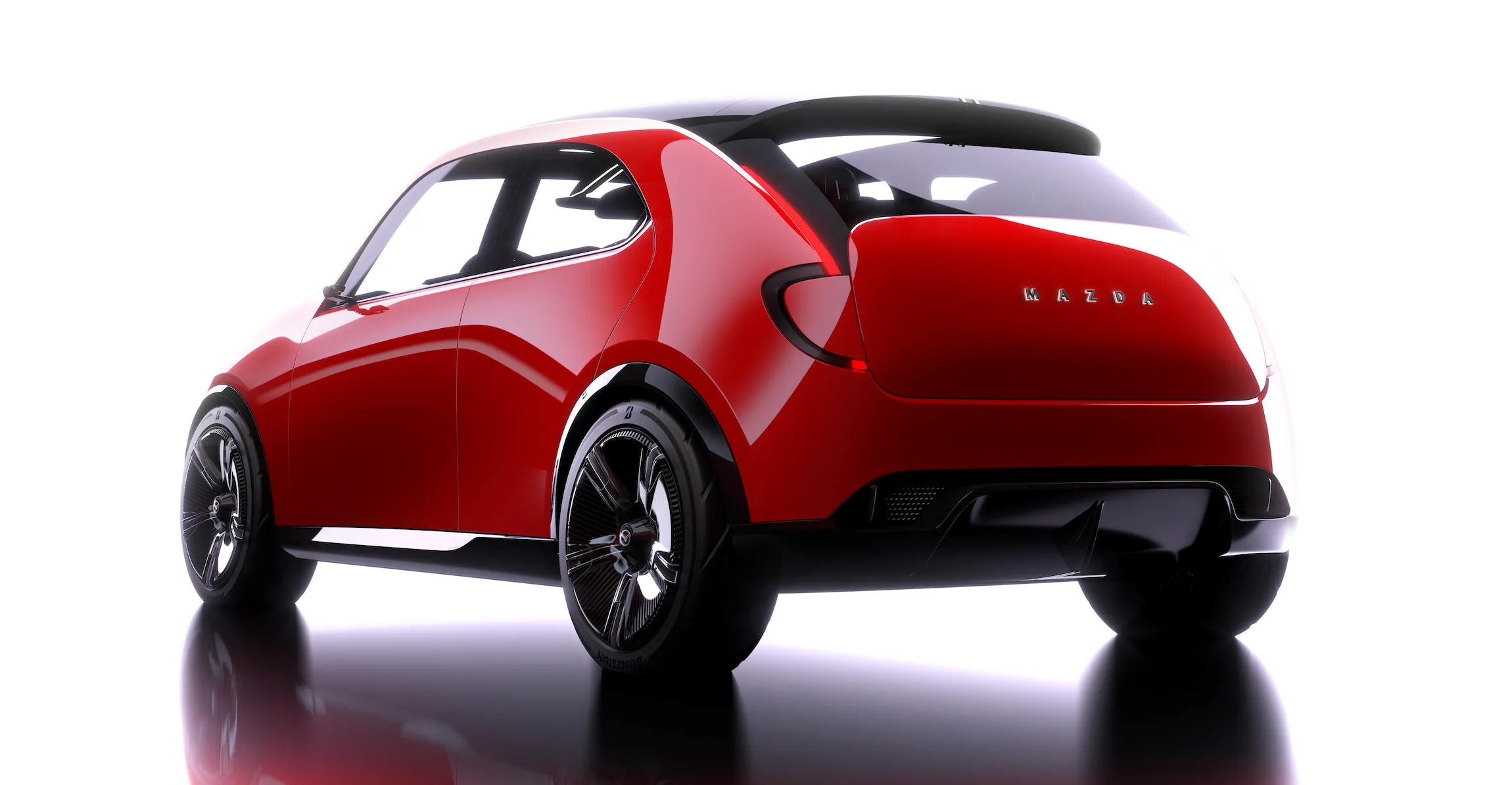
The interior is a lesson in functional minimalism. Forget the giant screens that dominate modern car dashboards. In the Vision X-Compact, Mazda opted for a more driver-focused approach. There’s only a digital and circular instrument cluster, framed by a delicate steering wheel with controls combining rotary and sliding buttons. The big surprise? There’s no built-in infotainment system. Instead, a holder allows your smartphone to become the hub of everything—an intelligent and economical solution. It’s the opposite of the trend we see in other models, like the new Mazda CX-5 interior, showing that the brand explores different futures. The panoramic glass roof and internal panels matching the exterior color create a spacious and welcoming cabin.
More Than a Car, a Companion: The AI That Wants to Be Your Friend
Here lies the true revolution of the Mazda Vision X-Compact: its technological heart. Mazda doesn’t just want a car with a voice assistant. It wants a digital companion, a Conversational and Empathetic Artificial Intelligence that forms an emotional bond with the driver.
Imagine the following scenarios:
- You get into the car stressed after a day at work. The AI perceives your mood through your voice and expressions and suggests a relaxing playlist.
- You are undecided about where to go. The AI remembers: “Remember that café you liked? There’s a fun road to get there, shall we?”
- You execute a perfect overtaking maneuver. The AI might even compliment you: “Nice move!”
This technology goes beyond simple commands. It learns your preferences, understands your mood, and knows when to interact or when to remain silent. Mazda affirms that this is not science fiction, but the next step in the relationship between humans and machines—a human-sensorial fusion that transforms driving into an experience of connection. With technology giants like Google investing billions in AI, the automotive application of this technology is a race that has already begun globally.
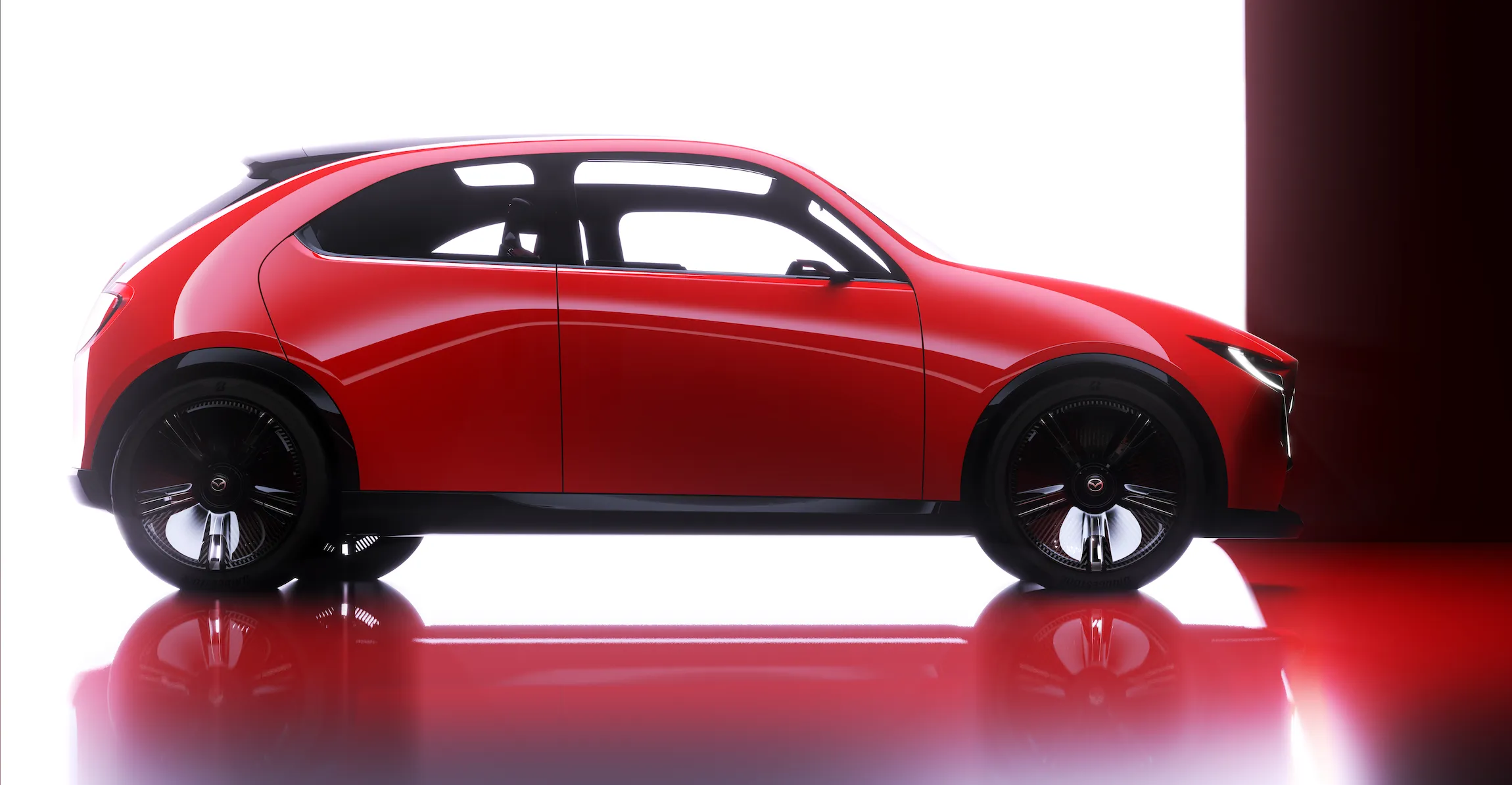
Uncomplicated Technical Sheet: What We Know (and What Mazda Hid)
Although it is a design study, Mazda revealed some important technical data that helps us understand the size and proposal of the Vision X-Compact. The “X” in the name, pronounced as “Cross,” suggests versatility to navigate the urban jungle.
“The Vision X-Compact was designed to deepen the bond between people and vehicles, acting as a digital companion that fosters an emotional connection.” – Mazda statement
Here are the key dimensions:
| Specification | Value (Metric) |
|---|---|
| Length | 3,825 mm |
| Width | 1,795 mm |
| Height | 1,470 mm |
| Wheelbase | 2,515 mm |
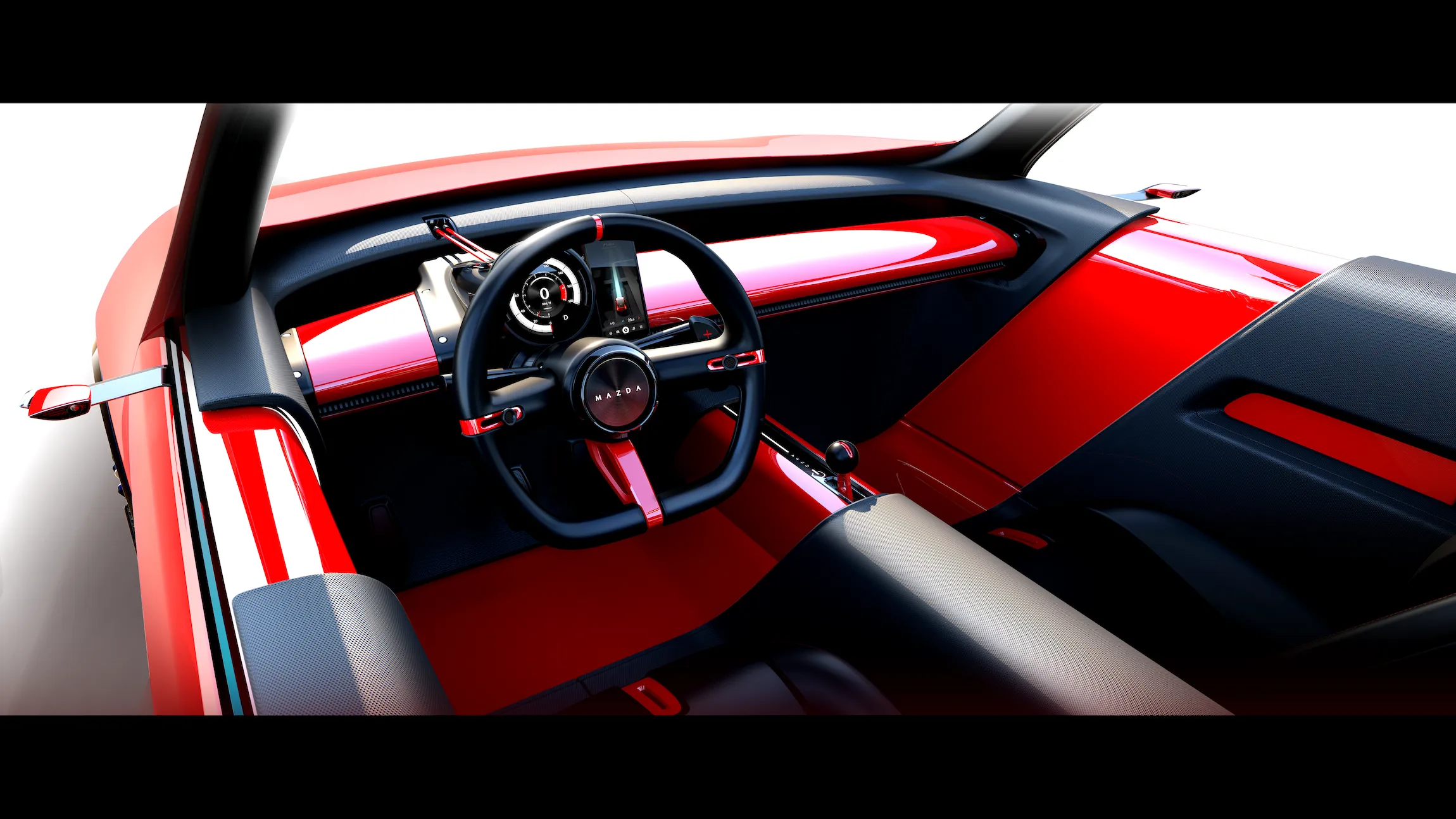
However, the big mystery is the powertrain. Mazda has been completely silent about what powers the Vision X-Compact. The closed front grille and the absence of a visible exhaust strongly suggest an electric motor or, at least, an advanced hybrid system. Considering the brand’s philosophy of seeking efficiency, an electric system with a cutting-edge battery—perhaps inspired by advancements like the solid-state batteries that Toyota is developing—would make perfect sense. But for now, this remains in the realm of speculation.
Even if the Mazda Vision X-Compact never reaches production exactly as we see it, its purpose is clear: to show where Mazda is headed. It is a vision that goes beyond simple transportation, seeking to transform our cars into spaces of well-being, connection, and, why not, friendship. It proves that the future of mobility may not be in larger, more complex cars, but in smaller, smarter vehicles with more soul. While other concepts focus on brute power and flamboyant design, like the Lamborghini Manifesto concept, Mazda bets on emotion and sophisticated simplicity. And you, would you trade huge screens for an AI that truly understands you?


